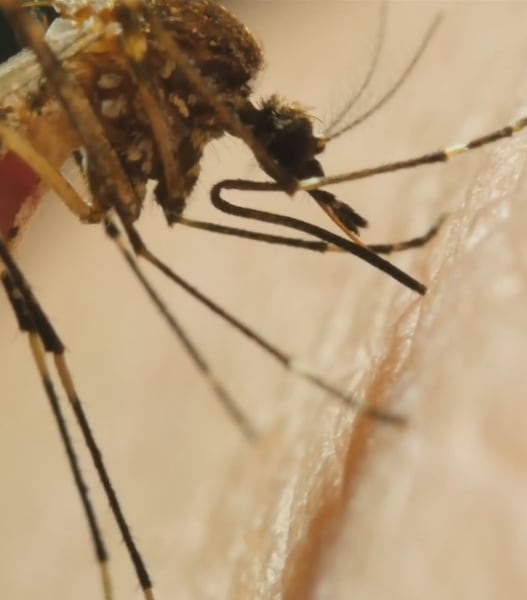People died of pneumonia Last week, Arizona’s first death in almost 20 years due to the disease in this region.
This death must keep in mind the Bubonic Plague, the form of murdered infectious diseases. Millions of people during the Middle Ages. This latest case is not the same form, and since then, treatment has been clear. In other words, I wanted to know what pneumonia is, how it spreads, and what symptoms are. How is diagnosis and what treatment can you use? What can people do to reduce the risk of disease contraction? And how worried about people about infectious diseases?
To help these questions, CNN Wellness Expert Dr. I talked to Leana Wen. Wen is an emergency doctor and clinical associate professor of George Washington University. She was a former health member of Baltimore.
CNN: What is pneumonia epidemic?
Doctor Leana Victory: Pneumonia epidemic is one of the three types of infectious diseases caused by Yersinia Pestis bacteria. that Type Someone is classified according to the position where bacteria are concentrated. Bubonic plague infects lymph nodes. Sepsis epidemics are when bacteria cause systemic infection through blood flow, and pneumonia epidemic affects the lungs.
CNN: How do someone contract an infectious disease? Can each person spread?
wen: It depends on the type of infectious diseases. Bubonic plague is generally caused by the bite of the rodent flea. It can be carried out with a hematopoietic infectious disease, which can occur as a result of treating infected animals such as rats and cats. Cats and other animals can eat rodents or shrink infectious diseases through fleas.
Pneumonia epidemic occurs when bacteria spread to the lungs of a person who started with Bubonic or Stepemic Plague. It can also occur when bacteria are directly transmitted through air bubbles. It occurs when someone inhales a liquid enemy containing a yersinia bacteria coughed by someone who is infected or an animal. This is the only form of infectious diseases that can spread to humans.
CNN: What are three types of infectious diseases?
wen: People infected with all three forms have common infectious symptoms, including heat, headaches, chills and weaknesses. People with Bubonic Plague have one or more swollen lymph nodes called Buboes. In the blood hemorrhagic infectious diseases, sowing bacteria to another part of the body can lead to multiple tissue disorders and the entire body shock. Pneumonia epidemic is characterized by pneumonia that progresses quickly due to difficulty breathing, cough and chest pain.
CNN: Is the epidemic common?
wen: no. The average cases of seven human epidemics reported every year in the United States US Centers for Disease Control and Prevention Center. More than 80% of the case is the Bubonic plague. Most human cases have occurred Two areas: Northern Arizona, New Mexico northern and Southern Colorado; California, southern duckgans and ranged niba.
Infectious diseases have also been reported in many parts of the world. According to World Health OrganizationSince the 1990s, most human cases have occurred on the African continent. The three countries with the most epidemic are Congo Democratic Republic, Madagascar and South American countries.
CNN: How much should people worry about pneumonia if they are transmitted to people?
wen: Arizona has only one person who has been diagnosed with pneumonia. There was no report on other infected individuals. Health expert “The risk of the public for exposure to infectious diseases is still low.. ”
How is CNN: PLAGUE diagnosis?
wen: It is done through diagnosis Lab Part of the blood, sputum and swollen lymph nodes. Immediate perception is important because there is a very fast and effective antibiotic therapy. If there is a high level of suspicion, antibiotics often begin before checking.
CNN: What treatment can you use?
wen: The good news is that there are accessible and effective treatments. Multiple antibiotics Effective for Yersinia Pestis. In the United States Gentamycin and Fluoroquinolone Primary treatment.
It is important that antibiotic therapy begins immediately. If you leave it in an unprocessed state, the case mortality rate is 30% ~ 100%.
CNN: Is there a vaccine for infectious diseases?
wen: Vaccine for infectious diseases Approved There is a high risk of exposure, but this vaccine Cannot be used anymore In the United States, depending on how rare this disease is. portion Potential vaccine candidate It is being developed.
CNN: What can people do to reduce the risk of infectious diseases?
wen: Most Americans do not live in areas where infectious diseases can be found. For people in the western United States where the epidemic occurs Some actions It can be taken to reduce potential exposure.
First, avoid contact with wildlife. Do not process wild rodents. Do not touch pain or dead animals.
Second, in most cases, it is related to rodents, so people should store pet feeds in anti -rodents and remove brushes and garbage around the house to prevent rodent infections.
Third, avoid fleas. If you wear long sleeves and work in hiking, camping or outdoors, use insect insect insect insect insect repellents. Use a flea control product approved by a veterinarian to stay away from home pets.
Fourth, keep pets in areas known to live with wild rodents. Get the prospect of livestock, especially the diseases of the indoor cats, and be promptly treated.
As all of this says, I think it’s important to remind us how rare an infectious disease is. Those who live in the area where the epidemic are found should take preventive measures, and clinical trials must request a travel agency in this area. But most Americans don’t have to worry about epidemics based on this recent single case in Arizona.






































